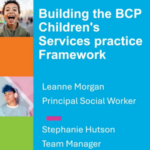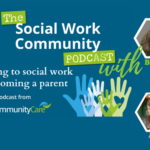The summer silly season was punctuated at the end of July with the government’s publication of draft guidelines on how the new local safeguarding children’s boards, a central plank in its children’s services reforms, will work when they come into force next April.
The statutory boards, which will replace area child protection committees, will have a much wider remit and involve a far greater range of agencies than their non-statutory predecessors.
There will be a heavy emphasis on prevention and promoting welfare. Within this the boards will be required to co-ordinate services and make sure that the member organisations are working effectively. But it is clear that protection will remain their key focus and only when that is sorted will boards be free to take on a wider remit.
For the first time, agencies such as youth offending teams, primary care trusts and the police will be legally required to co-operate in setting up, running and delivering the boards’ functions. Schools, FE colleges, children’s centres and the voluntary sector will also be important partners.
By April 2008, the boards will be required to review all child deaths and co-ordinate the response to unexpected child deaths through new child death overview panels. Everyone involved with a child’s care before or after their death will have to submit all relevant paperwork to the panel, and every primary care trust should have a named consultant paediatrician available to give advice on such deaths.
Where abuse or neglect is known or suspected to be a factor in a child’s death, boards will take over responsibility for undertaking serious case reviews to look at professionals’ and organisations’ involvement with the child and their family. Each relevant service must review its involvement with the child and family, and the board will then commission an overview report that will analyse the findings and make recommendations.
While much in the guidance has been welcomed concerns remain, notably around whether the costs of the new boards will be adequately met.
There is also anxiety around the risk posed during the transition period when authorities will effectively be running two child protection systems in tandem.
Key points for boards
Agencies get on board for protection
August 30, 2005 in Child safeguarding
More from Community Care
Related articles:
Job of the week
Employer Profiles
Workforce Insights
 Harnessing social work values to shape your career pathway
Harnessing social work values to shape your career pathway  Would you move from the city to work in a more rural setting?
Would you move from the city to work in a more rural setting?  Webinar: building a practice framework with the influence of practitioner voice
Webinar: building a practice framework with the influence of practitioner voice  ‘They don’t have to retell their story’: building long-lasting relationships with children and young people
‘They don’t have to retell their story’: building long-lasting relationships with children and young people  Podcast: returning to social work after becoming a first-time parent
Podcast: returning to social work after becoming a first-time parent  Workforce Insights – showcasing a selection of the sector’s top recruiters
Workforce Insights – showcasing a selection of the sector’s top recruiters



 Bournemouth, Christchurch and Poole
Bournemouth, Christchurch and Poole  Oxfordshire County Council
Oxfordshire County Council  South Gloucestershire Council
South Gloucestershire Council  Wokingham Borough Council
Wokingham Borough Council  Free CPD on Parkinson’s for health and social care staff
Free CPD on Parkinson’s for health and social care staff 

 Facebook
Facebook X
X LinkedIn
LinkedIn Instagram
Instagram
Comments are closed.